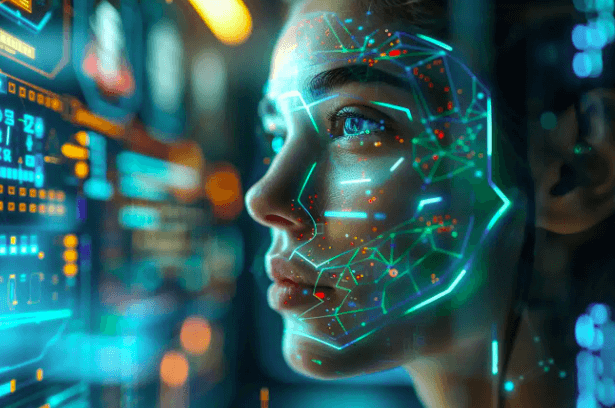Face Swapper: Understanding the Technology, Applications, and Ethical Concerns

In today’s digital age, face swapper has become one of the most intriguing and popular applications of artificial intelligence (AI). This technology allows users to digitally swap faces between individuals in images or videos, creating uncanny results that range from humorous to realistic. While face swapping started as a lighthearted social media trend, it has grown to encompass a broad range of uses in entertainment, marketing, art, and even law enforcement. However, as with many advancements in AI, face swapping also brings with it a host of ethical dilemmas, particularly regarding privacy, consent, and misuse.
This article explores how face swapper technology works, the different ways it’s used, and the ethical issues it raises.
What is Face Swapper Technology?
A face swapper is a software tool or app that uses AI and machine learning to exchange one person’s face with another’s in photos or videos. The technology analyzes facial features, expressions, and proportions, and overlays one face onto another in a way that looks as natural as possible.
In the early stages of face-swapping technology, the results were often crude, with mismatched angles and poor blending. However, the development of deepfake technology, which also relies on AI, has significantly enhanced the realism and precision of face-swapping, allowing for incredibly convincing swaps that can be difficult to distinguish from real footage.
How Does Face Swapper Technology Work?
Face swapper technology is grounded in the principles of computer vision, the field of AI that focuses on teaching machines to interpret and understand images. Here’s a step-by-step overview of how a face swapper typically works:
Face Detection:
The first step is identifying the face(s) in the image or video. The software detects facial landmarks—key points on the face, such as the eyes, nose, mouth, and jawline—that it can use to align the face accurately.
Face Alignment:
Once a face is detected, the next step is to align it with the face that will be swapped in. This ensures that the facial features are positioned in a way that looks natural and consistent, despite different angles or lighting conditions.
Facial Feature Mapping:
The software maps the facial features of both the source face (the one being swapped out) and the target face (the one being swapped in), paying close attention to expressions, textures, and contours. AI models are trained to understand facial expressions and mimic the original face’s movements on the swapped face.
Face Blending:
After the face swap is performed, the final step is to blend the new face into the original image or video. This involves adjusting lighting, skin tone, and shadows to make the swap appear seamless. Some advanced face swappers use deep learning to account for minute details like wrinkles, reflections, or even facial hair.
Rendering:
The last stage is rendering the final output, where the system fine-tunes the details of the face swap to make the result as realistic as possible.
Popular Applications of Face Swapper Technology
Face swapping has moved beyond a simple novelty and is now being used in a variety of fields. Here are some of the key applications:
1. Entertainment and Social Media
Perhaps the most widespread use of face-swapping technology is in entertainment and social media. Popular apps like Snapchat, TikTok, and Instagram feature face-swap filters that allow users to swap faces with friends, celebrities, or even fictional characters. This has led to countless viral moments, as users create funny or bizarre swaps to share with their followers.
In the movie industry, face-swapping is often used to create special effects. For example, filmmakers use AI face swap tools to de-age actors, replace stunt doubles, or even resurrect deceased actors for new roles.
2. Art and Creative Expression
Artists and digital creators are using face-swapping technology to explore new forms of creative expression. AI-generated art often blends faces in unusual ways, creating surreal portraits that challenge our understanding of identity and realism. Additionally, face swap tools can be used in photo editing and retouching to manipulate or enhance images for artistic purposes.
3. Marketing and Advertising
Face-swapping is being increasingly utilized in marketing to create personalized content for consumers. Advertisers can use face-swap technology to superimpose a customer’s face onto a model in an ad, giving them a more personalized and engaging experience. This type of marketing can make products feel more tailored to the individual, whether it’s for virtual try-ons of clothes or interactive video ads.
4. Education and Training
Face-swapping technology is also being employed in educational settings, particularly for training purposes. Medical professionals, for example, use face-swapping simulations to train on facial surgeries by altering facial structures in virtual environments. Law enforcement agencies have also used the technology to assist in suspect identification by superimposing potential suspects’ faces onto witness sketches.
5. Law Enforcement and Security
In some cases, face-swapping is used to help in law enforcement efforts, such as reconstructing the appearances of criminals who have tried to disguise themselves. While still in its infancy, this technology can help create accurate facial composites or simulate aging to locate suspects who may have changed their appearance.
Ethical Concerns and Challenges
Despite the exciting potential of face swapper technology, there are significant ethical concerns that need to be addressed. The ease with which face-swapping can create hyper-realistic images and videos raises questions about privacy, consent, and the potential for misuse.
1. Deepfakes and Disinformation
One of the most troubling uses of face-swapping technology is the creation of deepfakes—videos that swap someone’s face onto another body to make it appear that they said or did something they never did. Deepfake videos have been used to create fake news, manipulate public opinion, or damage reputations by showing public figures in compromising situations.
These deepfakes can be nearly indistinguishable from reality, making it difficult for viewers to know what’s real and what’s not. The potential for misinformation, especially during elections or sensitive political events, is a growing concern.
2. Non-Consensual Content and Privacy Violations
Face-swapping technology can be used to create non-consensual explicit content, such as deepfake pornography, where someone’s face is placed on another person’s body in an explicit video. Victims of these non-consensual face swaps often suffer from reputational damage and emotional distress, and it can be challenging to remove these videos once they spread across the internet.
The question of privacy also looms large, as people’s faces can be easily taken from social media profiles or public images and used without their consent. Many argue that stricter regulations are needed to protect individuals from this kind of exploitation.
3. Identity Theft and Fraud
As face-swapping technology improves, there is concern about its potential use in identity theft or fraud. For instance, face-swapping could be used to impersonate individuals in video calls, creating security risks for both personal and professional communications.
4. Bias and Discrimination
AI systems, including face-swapping tools, are only as good as the data they’re trained on. If the training data is biased toward certain demographic groups, the technology may not work as effectively for people of other ethnicities, genders, or ages. This could lead to discriminatory outcomes, such as inaccurate or unrealistic face swaps for underrepresented groups.
The Future of Face Swapper Technology
The future of face-swapping technology is full of both promise and challenges. As AI continues to evolve, face swappers will likely become even more accurate and capable of creating seamless face swaps in real time. This will open up new possibilities for entertainment, personalization, and education, while also presenting new risks for privacy, consent, and security.
There is growing interest in developing safeguards to ensure that face-swapping technology is used responsibly. Some tech companies are already working on tools to detect deepfakes, which can help identify manipulated content. At the same time, policymakers are considering regulations to address issues related to consent and privacy in AI-generated media.
Conclusion
Face swapper technology represents a fascinating intersection of innovation and ethical concern. Its applications in entertainment, art, marketing, and education are wide-ranging, offering new ways to engage with digital media. However, the misuse of this technology, particularly in the creation of deepfakes and non-consensual content, raises significant ethical challenges. As face-swapping continues to evolve, it will be crucial to balance innovation with responsibility, ensuring that the technology is used for creative and positive purposes while minimizing harm to individuals and society at large.



